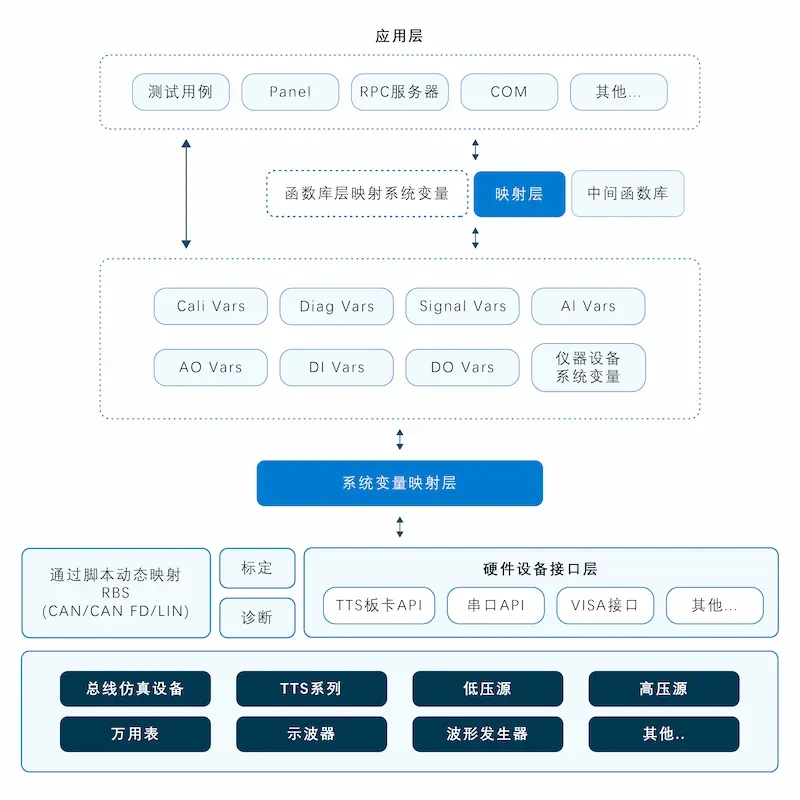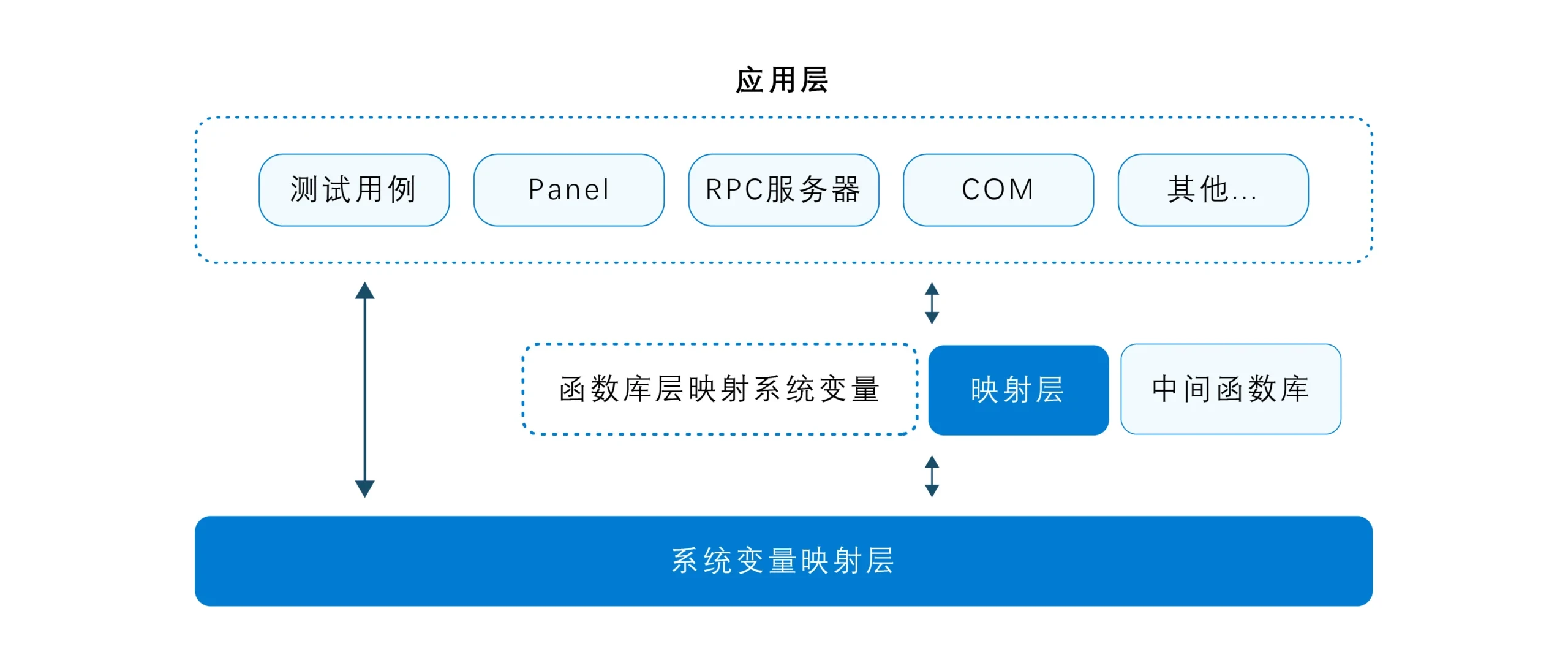TTS Test System
TOSUN's TTS test system integrates all the circuit components required to connect I/O channels into a single module, which can greatly simplify the setup of test benches and HIL test systems, and improve the efficiency of building and testing.
The TTS system is based on TSMaster, which realizes the integration of TTS chassis, supporting instrumentation, diagnostics and calibration on the software side, and realizes the single system covering the testing requirements in the development of on-board ECUs.
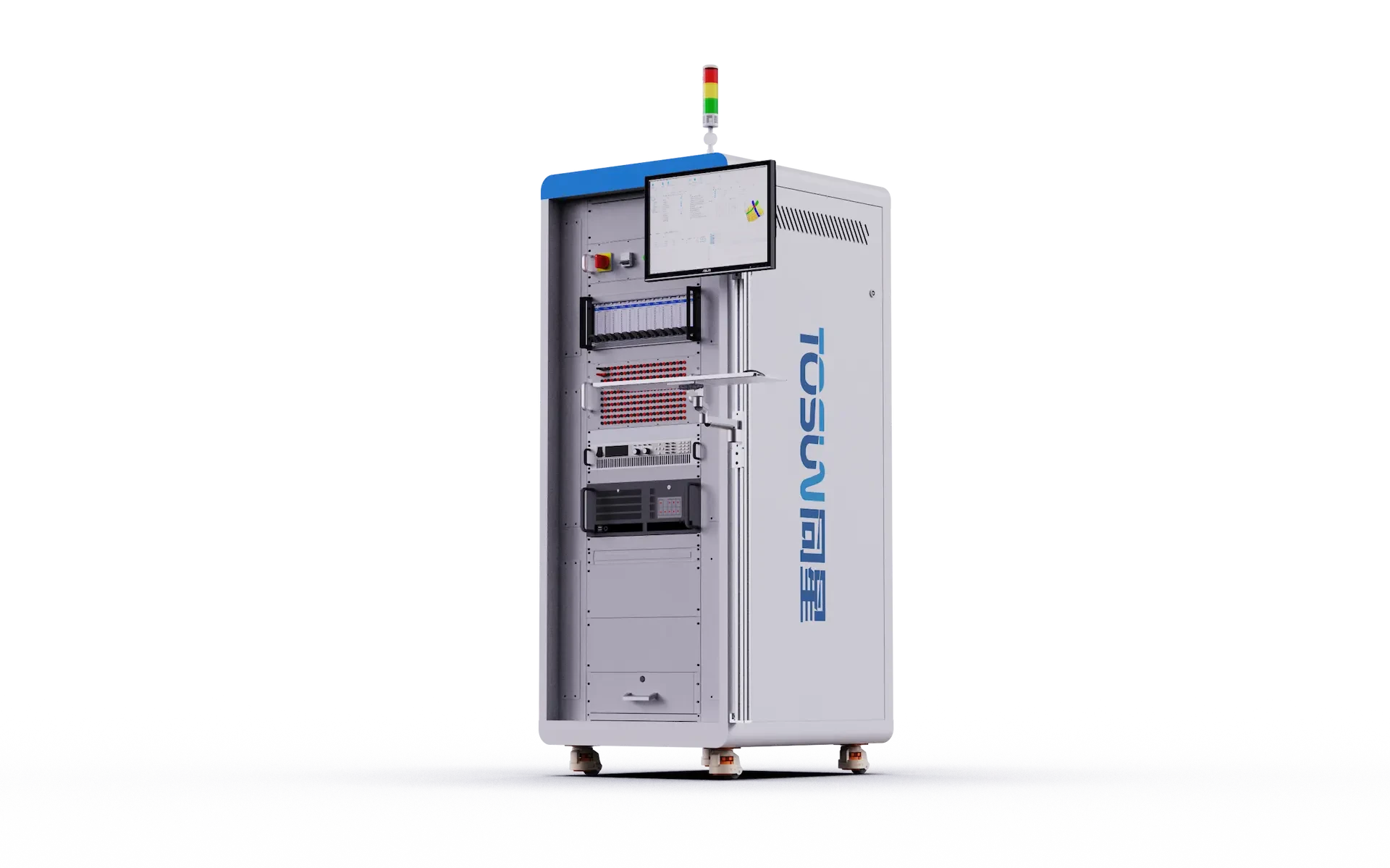
Advantages
- All relevant test components are integrated into one device:
- CAN FD / CAN / Car Ethernet / FlexRay / LIN Communication Boards
- Digital Input/Output Boards
- Analog Input/Output Boards
- Relays, fault injection boards, etc.
- Resistors for analog sensors
- Minimal wiring effort for test setups
- Voltage range for automotive applications
- Seamless integration into TSMaster
Application Areas
-
Dedicated test systems for individual ECUs
-
Universal Function Tester for ECUs and Subsystems
-
Flexible test hardware for developer workstations
-
Desktop-level network automation test system
Respond quickly to changes and maintain stability and flexibility in the testing process
efficient call logic.
Streamline the testing process.
TSMaster Test System Framework
TSMaster Test System Framework
The systematic solution of TTS is realized through the test system architecture of TSMaster. In it, TTS maps the resources provided by TTS, such as AI, AO, DI, DO, etc., to system variables through a mapping layer, together with the calibration module, diagnostic module, and RBS module, as part of the TSMaster test system architecture.
Application Layer Perspective
Application Layer Perspective
- The test logic is decoupled, not tied to a database, not tied to specific instrumentation or boards. The system variable layer and the logic layer above the variable layer are detached from the physical logic layer. Therefore, the upper application layer does not need to be changed after the development and debugging is completed.
When the following changes occur in the lower levels, the following adjustments are made:- If the ECU corresponds to a database upgrade, the database is reloaded and the signal mapping module is adjusted.
- If the A2L changes, reload the A2L file. If the signal name changes, adjust the mapping name.
- The chassis hardware or wiring form has changed, just load the corresponding mapping configuration.
No changes are made to the upper logic layer after the adjustment is complete.
- High accessibility of internal resources, scalability. Through the mapping layer, all hardware devices, software resources, etc. are mapped to system variables. Based on the system variables, internal test system, panel and other modules can access internal resources, and local (non-local) external processes can also access internal resources through RPC and COM.
- Provide the simplest call logic to the upper layer, test cases can be realized by using sequential call logic in most scenarios.
Load Mapping Table
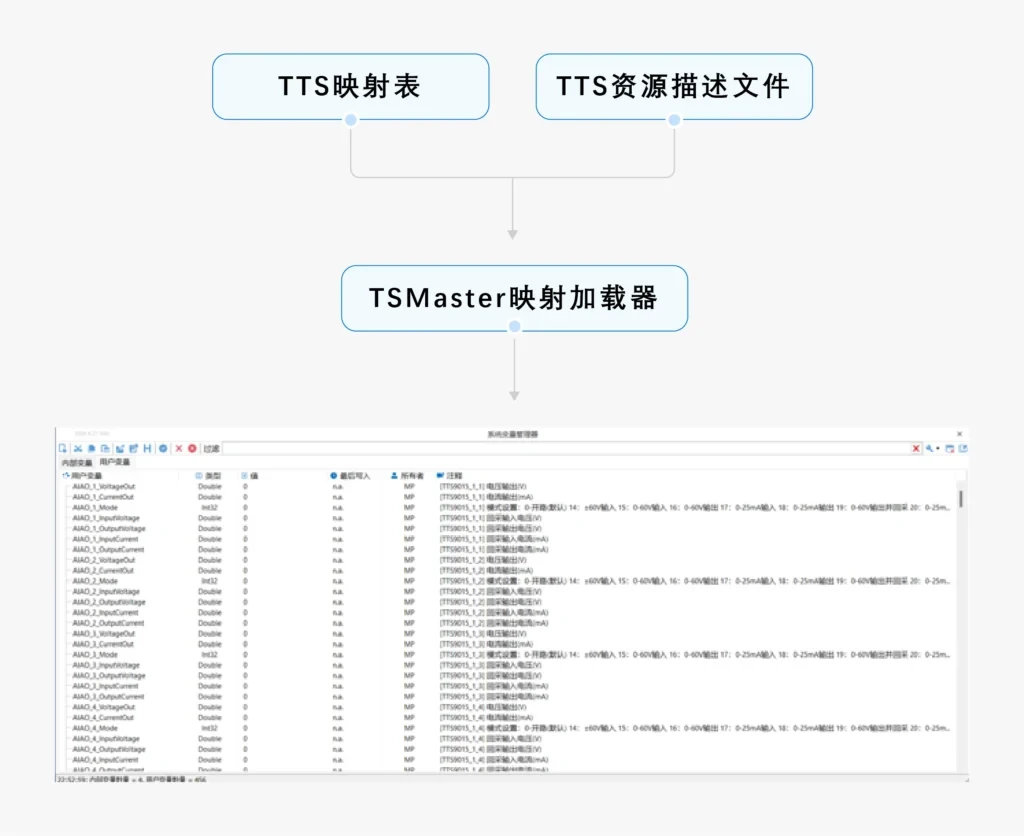
Panel Associated TTS Resources
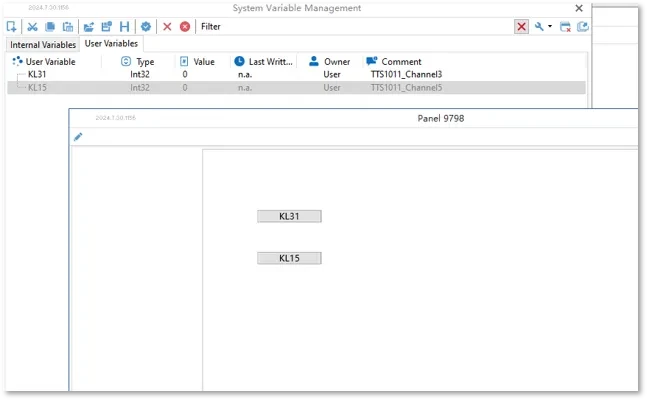
Panel Associated TTS Resources
Excel-based import testing process

TTS Product Series
8000Series Boards
-
8516
Digital and analog signal acquisition/output and fault injection
9000Series Boards
-
9011
Digital Signal Acquisition/Output
-
9015
Analog signal acquisition/output
-
9021
fault injection
-
9036
Programmable Resistors
TTS0001 - 12 Slot Chassis
- Chassis hardware module + TSMaster or TStest software
- User-assembled systems for functional testing of ECUs, vehicle networks, avionics and industrial control systems.


